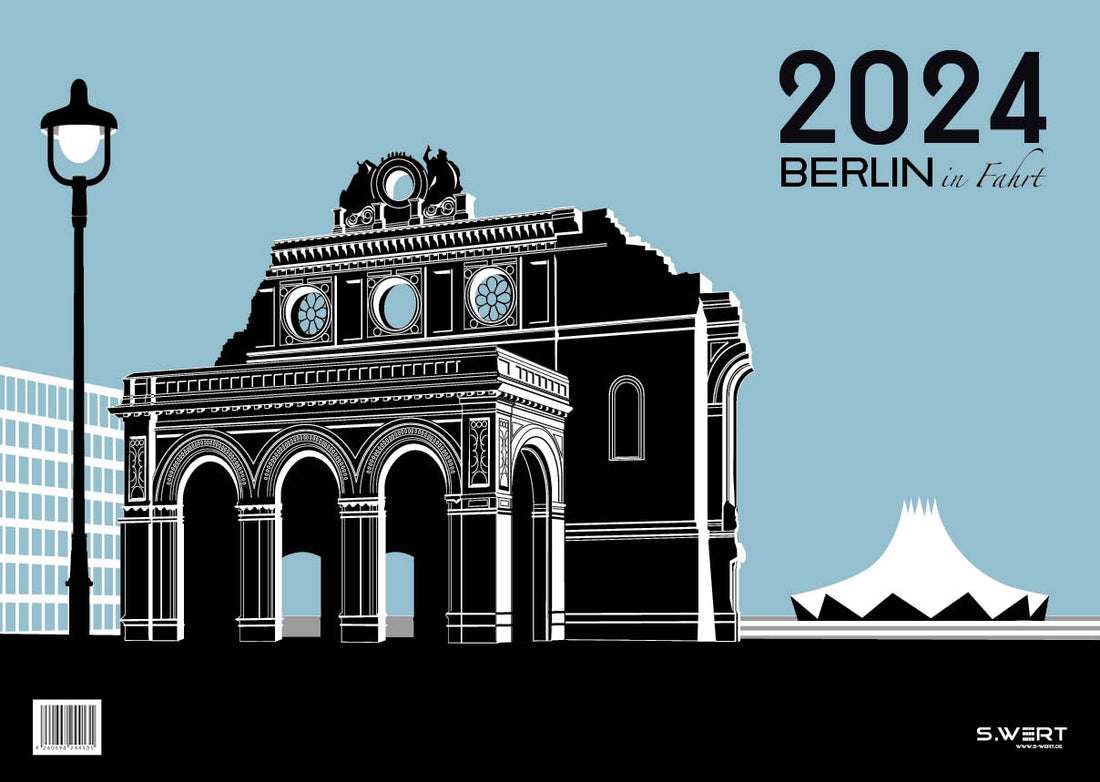
s.wert calendar 2024 - Berlin on the move
shares
Berlin on the move.
We are pleased to present the new s.wert wall calendar 2024 "Berlin on the move". The s.wert calendar 2024 is a journey to Berlin's most diverse architectural sights - from S-Bahn stations of the 19th century to contemporary skyscrapers. The calendar, printed using the Pantone process, contains twelve minimalistic illustrations of Berlin's traffic structures.

The visual journey of discovery through the city begins in January in a socialist-modern way with the Haus des Reisens and ends in December with the trendy 70s subway station Paulsternstrasse. Each month in our calendar presents a unique illustration of one of the city's major transportation structures.

We start with the "House of Travel", which is not only an architectural jewel of socialist modernism, but also a symbol of the longing for freedom and wanderlust. If you consider that trips abroad in the GDR were reserved for only a few people.

In February we encounter the iconic "Avus Motel", the circular hotel building on Berlin's most famous autobahn, known for its speed and elegance.

The month of March shows the impressive ruins of the Anhalter Bahnhof and the Tempodrom in the background, symbols of Berlin's past and future.

This is followed by an illustration of the BVG depot on the April calendar page Müllerstrasse. The building complex was designed by the architect Jean Kramer and is an important example of 20th century architectural modernism. The Hamburger Bahnhof adds a nostalgic touch to the May calendar. The former train station has been used as a museum since 1996.
In June we will take you to the impressive 1970s Autobahn superstructure on Schlangenbader Strasse (colloquially: snake) and immerse yourself in the modern architecture of Berlin. The Wilmersdorf residential complex is built on a motorway route.

In August we enjoy the "view from the Warschauer Straße to the Edge East Tower" and experience the dynamic development of the Berlin skyline. With clear lines and the S-Bahn station Alexanderplatz is the focus in September. The train station in Berlin-Mitte is a major transport hub and an architectural icon of the city.
In October, "Tempelhof Airport" takes us into an era of air travel that has long since passed.

In December we present the "U-Bahnhof Paulsternstrasse", known for its futuristic architecture and modern design.

Conclusion: The s.wert calendar 2024 shows well-known city views and unknown architectural gems. The illustrations offer a varied visual journey through the year. Some of the buildings, such as the Kant garage and the Hamburger Bahnhof, have changed their use over time. Some cityscapes, such as the ruins of the Anhalter Bahnhof, will change. The trip goes on!